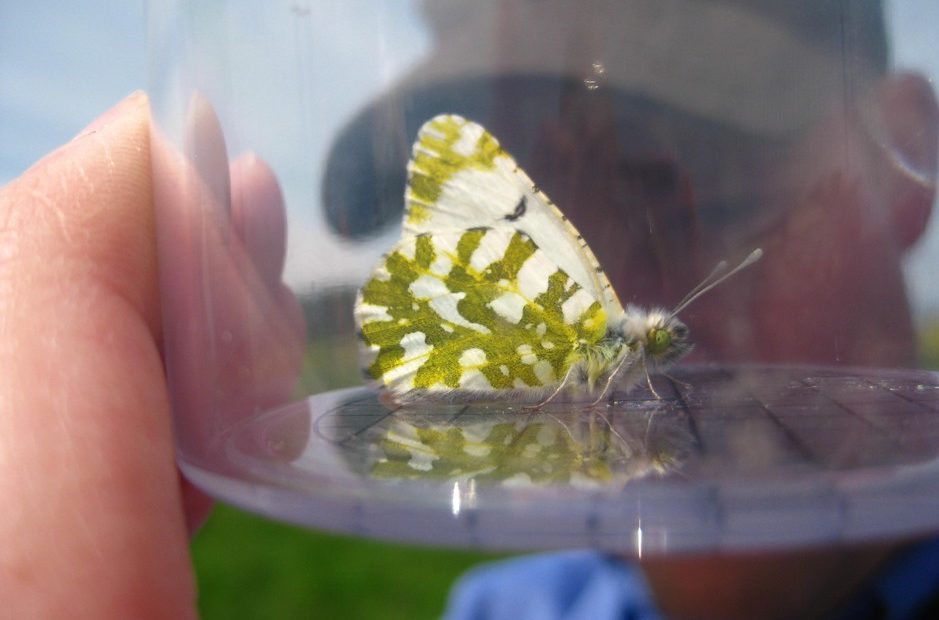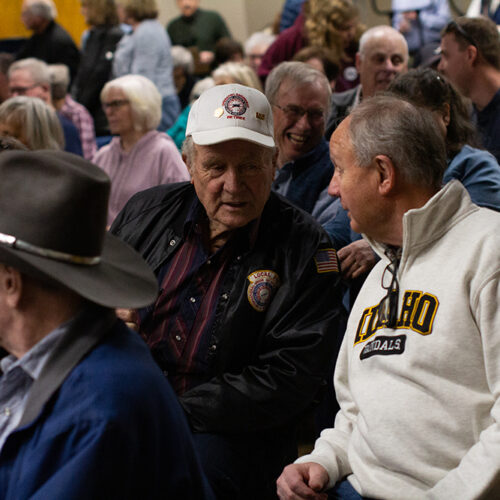
Butterfly Found Only In Washington’s San Juan Islands Headed To Endangered Species List
There’s only one place you can find one of North America’s rarest butterflies: on a small patch of an island in Washington’s Puget Sound. And it’s in trouble.
That’s why the federal government wants to add the island marble butterfly to the endangered species list.
There are so few island marble butterflies left, biologists once thought they were extinct. Scientists worked for years to save the tiny, white butterflies, but their numbers have continued to drop — this year biologists counted fewer than 200 on a small prairie at San Juan National Historical Park.
The butterfly faces a litany of threats: human development, agriculture, deer and rabbits eating the plants they live on, hungry spiders and wasps eating them, sea level rise from climate change.
That’s why the U.S. Fish and Wildlife Service also wants to designate 813 acres of critical habitat for the butterfly.
“We have pointed at the areas that the island marble butterfly uses, and essentially said: This is so critical that without this area, we cannot recover the species,” said Karen Reagan, a biologist with the service.
Historically the island marble butterfly was also found in Canada and on other islands: Lopez, Vancouver, Gabriola. Right now, they’re only found on one spot on San Juan Island.
“If we could get a daily peak count of over 250 — which would be a lot for this butterfly — I would be a lot more comfortable. And I would like to see them in more places in the San Juan Islands,” Reagan said.
Biologists have started a captive rearing program to give the butterflies a leg up. Conservationist groups, like the San Juan Preservation Trust, are also helping with habitat enhancement projects.
“Habitat enhancement projects will determine if the new habitat patches can attract the butterfly and support it through all its life stages. If successful, the butterfly could exist on our conservation lands in perpetuity,” said Kathleen Foley, the group’s stewardship manager, in a news release.

Biologists collect chrysalises and bring them into a captive rearing facility to protect them from possible threats, like being eaten by deer or mowed down. This chrysalis is tied with a red thread, simulating how it would be held to plants in the real world. CREDIT: ANN FROSCHAUER
Reagan hopes more landowners will help develop habitat across the central valleys of San Juan and Lopez Islands. The critical habitat designation mostly covers land owned by the federal government — less than 0.05 percent of the designation is on private land.
“That’s the only way we’re going to be able to recover the species,” Reagan said.
At the park, Reagan said the health of the butterflies helps scientists get a feeling for the health of the ecosystem as a whole.
“Most people don’t get excited about insects, to be frank. Insects are amazing. But these butterflies are so pretty and so colorful. And so when they disappear from our environment, it catches people’s attention. I think anytime you have a species that’s threatened with extinction, you should pay attention,” Reagan said.
The government is accepting public comments on its proposal through June 11.
Copyright 2018 Earthfix
Related Stories:

Pacific Northwest author’s new novel captures atmosphere of the region
On a gray, early spring morning, I drove to Steilacoom, Washington, to catch the ferry to Anderson Island. I boarded alongside the line of other cars and after parking, stepped out onto the deck of the boat. The ferry pushed off from the dock and rocked a little in the Puget Sound before steadying.
I took this journey to the real Anderson Island to see from the water what inspired Northwest author Kirsten Sundberg Lunstrum’s new novel, “Elita,” which was published earlier this year. Sundberg Lunstrum was inspired while sailing around the Puget Sound to write a mystery novel on an island.
Sundberg Lunstrum read excerpts of the book at a gathering at Tacoma’s Grit City Books.

Kennewick finds ‘forever chemicals’ in its drinking water for the second spring in a row
For the second spring in a row, Kennewick has found “forever chemicals” in its drinking water that are above Washington state’s standards.

Lewiston-based insurance company pulled Asotin MedAdvantage plans, citing growing financial pressure
In Asotin County, Washington, just over a quarter of the population is 65 or older. This year, a locally based insurance provider pulled its Medicare Advantage plans in the county.















